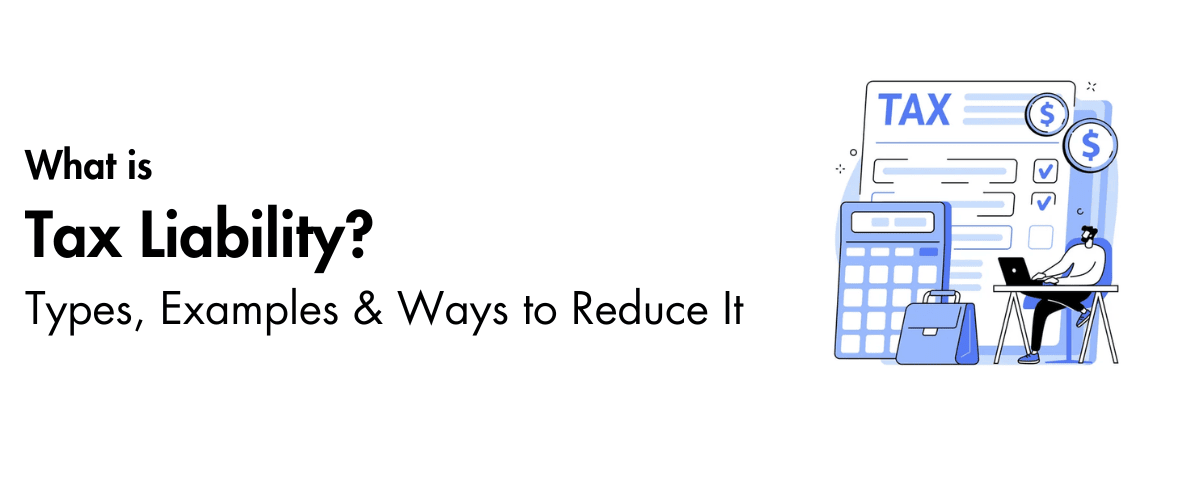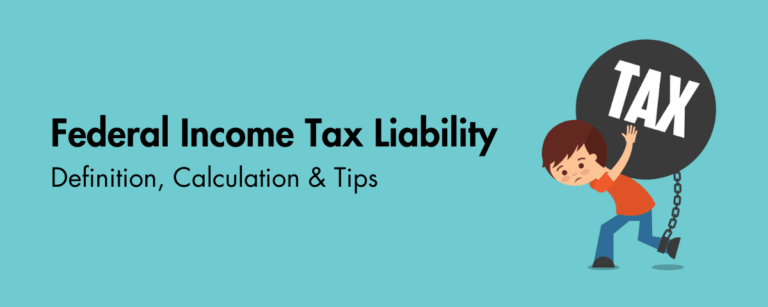Your refund is just a reconciliation. The number that really tells the story is your tax liability, the total tax you owe for the year before any payments you already made.
Think of tax liability as the scoreboard, and your refund or balance due as the final settlement after the game.
At a glance, your federal tax liability lives on Form 1040. Line 24 shows total federal tax after nonrefundable credits and additional taxes, but before refundable credits. You then compare that number to your withholdings and estimated payments to see if you still owe or you get money back.
Table of Contents
Key Takeaways
- Tax liability is the total tax you legally owe for the year after deductions, brackets, nonrefundable credits, and added taxes like self employment tax. It is the target to manage, not your refund.
- On Form 1040, line 24 is the key line that shows total federal tax before refundable credits. Your refund or amount due equals payments and refundable credits minus line 24. (irs.gov)
- For 2025, the standard deduction increased to about mid five figures. Use the correct year’s amounts when you calculate taxable income. I include the current figures later in this guide.
- Long term capital gains still use three rates, 0 percent, 15 percent, or 20 percent, with income thresholds that adjust annually. Higher earners may also owe the 3.8 percent Net Investment Income Tax.
- You can legally reduce liability by using deductions, credits, timing, retirement and HSA contributions, and smart capital gains planning.
Definition, In Plain English
Tax liability is the total amount of tax you are legally required to pay for the year after you figure taxable income, apply the tax rates for your filing status, subtract any nonrefundable credits, and add any additional taxes that apply to you. On your federal return, you will see this amount on Form 1040, line 24. (irs.gov)
What Tax Liability Means For You
Here is the simple path most filers follow.
- Start with gross income, wages, interest, dividends, business income, capital gains, and more.
- Subtract above the line adjustments to get AGI.
- Subtract the standard deduction or itemized deductions to reach taxable income.
- Apply the progressive tax brackets to that taxable income.
- Subtract nonrefundable credits, add additional taxes like self employment tax, and you land on total tax on Form 1040 line 24.
- Compare that total to your withholdings and estimated payments to find your refund or balance due.
Who Owes Tax Liability
Anyone who has taxable income or a taxable event can owe tax. That includes:
- Individuals who earn income, receive capital gains, or trigger other taxable events.
- Self employed people who may owe both income tax and self employment tax on net earnings.
- Employers, who create payroll tax liabilities when they withhold and remit employee taxes.
- Corporations and other entities that may owe income, franchise, sales, or excise taxes at the federal or state level.
For higher income investors, certain investment income can also trigger the 3.8 percent Net Investment Income Tax. (irs.gov)
Where It Shows On Your Return
On the federal Form 1040, line 24 shows your total federal tax after nonrefundable credits, plus additional taxes such as self employment tax that flow in from schedules. Refundable credits are applied after that line. Your refund or amount due depends on how line 24 compares to payments and refundable credits shown later on the form. Missing a required add on tax can understate your liability and lead to notices. (irs.gov)
A Quick Story To Ground This
A client once asked why their refund shrank even though their income stayed steady. The answer was simple. Their total tax liability went up because a chunk of their investment income moved into a higher bracket and the NIIT kicked in, but their payroll withholding did not change during the year. Once we adjusted their Form W 4 and timed a year end estimated payment, the next filing season had no surprises. That is the mindset shift you want, focus on the total tax first, then check whether your payments match it. (irs.gov)
How Tax Liability Is Determined
You build your tax liability in layers. First, determine taxable income. Next, apply the brackets. Then, add or subtract the items that come after the base tax, for example nonrefundable credits reduce the total, and additional taxes increase it. The result appears on Form 1040 line 24.
Step 1, Calculate Taxable Income
- Gather your gross income, wages, interest, dividends, business income, capital gains, and other sources.
- Subtract above the line adjustments to arrive at AGI.
- Subtract either the standard deduction or your itemized deductions.
- Apply any qualified business income deduction if eligible. The result is taxable income.
For the 2025 tax year, the standard deduction is:
- Married filing jointly or qualifying surviving spouse, $31,500
- Head of household, $23,625
- Single or married filing separately, $15,750 These updated amounts matter because they set the floor before brackets apply. (irs.gov)
Pro tip, if your state taxes piggyback on federal AGI, keep clean records for adjustments that flow through, for example HSA contributions or deductible IRA contributions.
Step 2, Apply IRS Brackets Correctly
The federal income tax uses progressive rates. Only the dollars that fall inside each band are taxed at that band’s rate. That is why your effective tax rate is usually lower than your top marginal rate. After you compute tax on taxable income, you subtract nonrefundable credits, then add any additional taxes that apply. The remaining total is your federal tax liability. (irs.gov)
A Small Worked Example
- Filing status, single.
- 2025 wages, 70,000 dollars, no other income.
- Above the line adjustments, 2,000 dollars. AGI becomes 68,000 dollars.
- Standard deduction, 15,750 dollars, so taxable income is 52,250 dollars. (irs.gov)
You would stack that 52,250 dollars through the 2025 brackets for a single filer. After the bracket math, you would subtract any nonrefundable credits you qualify for. If none apply, the resulting figure is part of the number on line 24, after adding any additional taxes that apply to you. (irs.gov)
The Calculation Map
| Step | What You Do | Why It Matters |
| 1 | Determine taxable income | Sets the base for your tax |
| 2 | Find your filing status and bracket bands | Ensures correct marginal rates |
| 3 | Tax each slice within its band | Prevents overtaxing the full income |
| 4 | Subtract nonrefundable credits | Lowers tax but cannot go below zero |
| 5 | Add additional taxes | Captures self employment, NIIT, and others |
| 6 | Land on Form 1040 line 24 | This is your total federal tax before refundable credits |
Additional Taxes That Can Increase Liability
- Self employment tax for sole proprietors and partners. This flows into your total on line 24.
- Net Investment Income Tax, 3.8 percent on the lesser of your net investment income or the amount by which your MAGI exceeds fixed thresholds, generally 200,000 dollars for single or head of household and 250,000 dollars for married filing jointly. (irs.gov)
Capital Gains, A Frequent Driver
You incur capital gains tax when you sell an asset for more than your cost basis. Short term gains are taxed at ordinary rates. Long term gains, assets held more than a year, use preferential rates of 0 percent, 15 percent, or 20 percent, and the income thresholds adjust each year. For 2025, the IRS published updated thresholds in the Internal Revenue Bulletin, which confirms the three rate structure and the inflation adjusted bands. (irs.gov)
If you harvested losses earlier in the year, those losses first offset gains, and up to 3,000 dollars of excess net capital loss can reduce ordinary income, with the rest carried forward.
Where People Trip Up
- Mixing up marginal and effective rates when planning.
- Forgetting to include additional taxes that must flow to line 24.
- Using last year’s standard deduction or thresholds, which can skew projections. Cross check 2025 figures before you finalize the return or your estimated payments. (irs.gov)
Ways To Reduce Your Tax Liability, Legally
You cannot skip taxes, but you can plan them. Here are practical, rules based moves you can consider.
- Max out pre tax retirement plans when eligible. Traditional 401(k) deferrals reduce wages subject to income tax.
- Fund an HSA if you have an HSA eligible health plan. Contributions are deductible, growth is tax free, and qualified withdrawals are tax free.
- Favor credits when you qualify. Credits reduce tax dollar for dollar, while deductions trim taxable income.
- Use tax loss harvesting to offset gains and then up to 3,000 dollars of ordinary income.
- If you itemize, check 2025 changes before year end planning, standard deduction amounts increased, and the IRS outlines 2025 withholding and planning updates on its site. (irs.gov)
Payroll Taxes And Your Plan
For 2025, Social Security tax applies to wages up to 176,100 dollars. Employees pay 6.2 percent and employers pay 6.2 percent, self employed individuals pay both sides through SE tax. There is no wage cap for Medicare tax. Knowing the wage base helps you forecast year end net pay and self employment estimates. (ssa.gov)
Align Payments With Your Liability
Even a well planned return can sting if your withholdings and estimates do not match your total tax. Use the IRS withholding tools and your year to date profit to dial in W 4 updates or quarterly estimates. That reduces penalties and smooths cash flow. The IRS confirms that line 24 is your anchor number when you evaluate whether you underpaid during the year. (irs.gov)
Capital Gains And Other Common Liabilities
- Long term capital gains, taxed at 0 percent, 15 percent, or 20 percent depending on your taxable income. Thresholds are inflation adjusted each year and are published by the IRS for 2025. (irs.gov)
- Short term capital gains, taxed at ordinary rates.
- NIIT, a 3.8 percent surtax for higher income taxpayers with investment income. The thresholds are fixed at 200,000 dollars single or head of household and 250,000 dollars married filing jointly. (irs.gov)
When Professional Help Saves Time
If you run a CPA, EA, or accounting firm, heavy seasons can turn smart planning into last minute scrambling. This is one of the few places where mentioning Accountably makes sense. Accountably provides offshore staffing and back office support so your in house team can focus on client facing advisory and compliance reviews, especially around year end estimates and line 24 projections. Use that kind of support when volume spikes or when you want coverage without over hiring.
FAQs
What is a tax liability in simple terms?
It is the total tax you owe for the year after you figure taxable income, apply the brackets for your filing status, subtract nonrefundable credits, and add any additional taxes. On the federal return, you will see it on Form 1040 line 24, before refundable credits are applied.
How do I know if I have no tax liability?
Work through your return using the current year’s standard deduction and credits. If your total on line 24 is zero and you do not have any additional taxes, and your refundable credits and payments exceed zero, you will not owe income tax for that year. Always use the correct year’s numbers.
Where is my tax liability on a W 2?
A W 2 shows wages and withholdings. It does not display your final tax liability. You compute liability on your return, and it appears on Form 1040 line 24. You then compare that total to your W 2 withholdings and any estimated payments to find your refund or balance due.
What about state tax liability?
Most states start with federal AGI, then apply state specific additions, subtractions, deductions, and credits. Check your state’s brackets and credits, then compare to your state withholdings and estimates. Keep in mind that 2025 federal changes to the standard deduction and other items may not match your state rules.
The Bottom Line
Your refund is not the goal. Your tax liability is. Find it on Form 1040 line 24, understand what raised or lowered it, and line up your payments during the year so you are not surprised in April. Use current year figures for the standard deduction and any surtaxes that might apply, including the 3.8 percent NIIT for higher income investors. If you run a firm, consider back office support during peak months so your team can spend more time on planning and quality control.








